Germans in the American Revolution
Ethnic Germans served on both sides of the American Revolutionary War. Many, notably rented auxiliary troops[1] from Germanic states such as the Landgraviate of Hessen-Kassel, supported the Loyalist cause and served as allies of the Kingdom of Great Britain, whose King George III was also the Elector of Hanover.
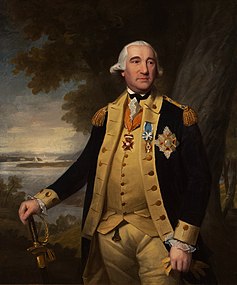
American rebel agitators misrepresented such troops as mercenaries to fuel propaganda against the British Crown. Even American historians followed suit, in spite of Colonial-era jurists drawing a distinction between auxiliaries and mercenaries, with auxiliaries serving their prince when sent to the aid of another prince, and mercenaries serving a foreign prince as individuals.[1] By this distinction the troops which served in the American Revolution were auxiliaries.
Other German individuals came to assist the American rebels, but most who did so were already colonists.
Allies of Great Britain

During the American Revolution, many German-speaking states, such as Hesse-Kassel, were loosely unified under the Holy Roman Empire. Typically these were officially Lutheran, making them traditional allies of other Protestant nations. Importantly, this included the Kingdom of Great Britain, whose king, George III, was also the Prince-elector of Hanover in the Holy Roman Empire. King George III came from an ethnic German family and was the first of the British royal House of Hanover to speak English as his first language.[2] Great Britain formed strong German alliances during the Diplomatic Revolution of 1756 and during the Seven Years' War had combined forces with Frederick the Great of Prussia to form a coalition that functioned as one Army.[3] When the British colonies in America rebelled a decade later, several German-speaking states contracted soldiers to the British Army. Despite Whig opposition to using German soldiers to subjugate the "sons of Englishmen," Parliament overwhelmingly approved the measure in order to quickly raise the forces need to suppress the rebellion.[4] The leasing of soldiers to a foreign power was controversial to some Europeans,[5] the people of these continental states generally took great pride in their soldiers' service in the war.[6] In some instances, ethnic Germans even enlisted directly into British units,[7] such as the 60th Regiment of Foot.[8]
The sudden demand for new soldiers placed a burden on recruiters. Base standards had to be met, including a minimum height and number of teeth required to operate flintlock muskets.[9] Recruiters could be forced to pay losses due to desertion or loss of equipment.[10] Recruiting from outside the Holy Roman Empire required the permission of Joseph II, so recruiters largely enlisted Soldiers from within the Empire.[11] This put officers from one allied state in direct competition with officers from other states allied with Great Britain, as well as recruiters from Great Britain who also recruited from within the Holy Roman Empire.[8]
Americans were alarmed at the arrival of German-speaking auxiliary troops on American soil, viewing it as a betrayal by King George III. Several American representatives to Continental bodies declared they would be willing to declare independence if King George used such soldiers against them.[12] The threat of such deployment was also used as propaganda by American rebels,[7] who derogatorily misrepresented hired troops as "foreign mercenaries", including in the Declaration of Independence:[13]
He is at this time transporting large Armies of foreign Mercenaries to compleat the works of death, desolation and tyranny, already begun with circumstances of Cruelty & perfidy scarcely paralleled in the most barbarous ages, and totally unworthy the Head of a civilized nation.
— U.S. Declaration of Independence
Colonial-era jurists drawing a distinction between auxiliaries and mercenaries, with auxiliaries serving their prince when sent to the aid of another prince, and mercenaries serving a foreign prince as individuals.[1] By this distinction, the troops which served in the American Revolution were not mercenaries, but auxiliaries. Early Republican historians, however, defended the term "mercenaries" to distinguish the foreign, professional armies from the idealized citizen soldier who altruistically fought for independence.[14] Mercy Otis Warren promoted the idea of German auxiliaries as barbarians, but also as victims of tyranny.[15]
At the conclusion of the war, Congress offered incentives—especially free farmland—for these ethnic Germans to remain in the United States.[16] Great Britain also offered land and tax incentives to its Loyalist soldiers willing to settle in Nova Scotia.[16]
Hesse-Kassel
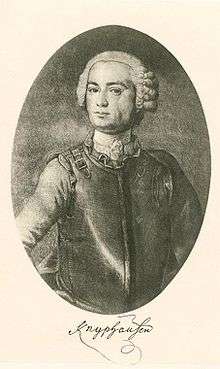
The financial basis of some smaller continental states was the regular rental of their regiments to fight for various larger nations during the 18th century.[17] The Landgraviate of Hesse-Kassel had "rented" out professional armies since the 17th century.[18] This also financially allowed Hesse-Kassel to maintain a larger standing army, which in turn gave it the ability to play a larger role in European power politics.[19] Hesse-Kassel pressed eligible men into service for up to 20 years, and by mid-18th century, about 7% of the population was in military service.[18] The Hessian army was very well trained and equipped; its troops fought well for whomever was paying their prince.[20]
The Landgraviate of Hesse-Kassel, under Frederick II, an uncle of King George III, initially provided over 12,000 soldiers to fight in the Americas.[21] Like their British allies, the Hessians had some difficulty acclimatizing to North America; the first troops to arrive suffered from widespread illness, which forced a delay in the attack on Long Island.[22] From 1776 on, Hessian soldiers were incorporated into the British Army serving in North America, and they fought in most of the major battles, including those of New York and New Jersey campaign, the Battle of Germantown, the Siege of Charleston, and the final Siege of Yorktown, where about 1,300 Germans were taken prisoner,[23] although various reports indicate that the Germans were in better spirits than their British counterparts.[24]
It has been estimated that Hesse-Kassel contributed over 16,000 troops during the course of the Revolutionary War, of whom 6,500 did not return.[25] Because the majority of the German-speaking troops came from Hesse, modern Americans sometimes refer to all such troops of this war generically as "Hessians". Hessian officer (later General) Adam Ludwig Ochs estimated that 1,800 Hessian soldiers were killed, but many in the Hessian army intended on staying in America, and remained after the war.[26] Captain Frederick Zeng, for example, served out his term with the armies of Hesse-Kassel and remained in the United States, even becoming an associate of Philip Schuyler.[27]
Hesse-Kassel signed a treaty of alliance with Great Britain to supply fifteen regiments, four grenadier battalions, two jäger companies, and three companies of artillery.[28] The jägers in particular were carefully recruited and well paid, well clothed, and free from manual labor.[29][Note 1] These jägers proved essential in the "Indian style" warfare in America, and Great Britain signed a new treaty in December 1777 in which Hesse-Kassel agreed to increase their number from 260 to 1,066.[30]
German-speaking armies could not quickly replace men lost on the other side of the Atlantic, so the Hessians recruited African-Americans as servants and soldiers. There were 115 black soldiers serving with Hessian units, most of them as drummers or fifers.[31]
Perhaps the best-known officer from Hesse-Kassel is General Wilhelm von Knyphausen, who commanded his troops in several major battles. Other notable officers include Colonel Carl von Donop (mortally wounded at the Battle of Red Bank in 1777) and Colonel Johann Rall, who was fatally wounded at the Battle of Trenton in 1776. Rall's regiment was captured, and many of the soldiers were sent to Pennsylvania to work on farms.[32]
The war proved longer and more difficult than either Great Britain or Hesse-Kassel had anticipated, and the mounting casualties and extended supply lines took a political and economic toll. Following the American Revolution, Hesse-Kassel would end the practice of raising and leasing armies.[33]
Hesse-Hanau
Hesse-Hanau was a semi-independent appendage of Hesse-Kassel, governed by the Protestant Hereditary Landgrave William, eldest son of the Roman Catholic Frederick II of Hesse-Kassel. When William received news of the Battle of Bunker Hill in 1775, he unconditionally offered a regiment to King George III.[34] During the course of the war, Hanau provided 2,422 troops; only 1,441 returned in 1783.[25] A significant number of Hessian soldiers were volunteers from Hanau, who had enlisted with the intention of staying in the Americas when the war was over.[26]
Colonel Wilhelm von Gall is one well-known officer from Hesse-Hanau;[35] he commanded a regiment from Hanau under General John Burgoyne.[36] Among the units sent to North America were one battalion of infantry, a battalion of jägers, a battalion of irregular infantry known as a Frei-Corps, and a company of artillery.
Brunswick-Wolfenbüttel
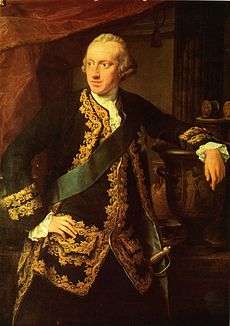
Brunswick-Lüneburg was a duchy that had been divided into several territories, one of which was ruled by George III as the Electorate of Brunswick-Lüneburg (Hanover). The neighboring Duchy of Brunswick-Wolfenbüttel (Brunswick) was ruled by Duke Charles I of Brunswick-Bevern; his son and heir, Charles William Ferdinand, was married to Princess Augusta of Great Britain, the sister of George III.[37]
In 1775 Charles William Ferdinand ("Prince Carl") told King George III that Brunswick had soldiers who could be used to help put down the rebellion in the Americas.[38] In December 1775, General Friedrich Adolf Riedesel began recruiting in anticipation of the finalized treaty.[11] Brunswick was the first German-speaking state to sign a treaty supporting Great Britain, on 9 January 1776. It agreed to send 4,000 soldiers: four infantry regiments, one grenadier battalion, one dragoon regiment and one light infantry battalion.[28] The Brunswick treaty provided that all troops would be paid in Imperial Thalers – including two months' advance pay, but required that all troops take an oath of service to King George III.[39] A controversial clause in the agreement stipulated that Duke Charles I would be paid £7 and 4s to replace each Brunswick soldier killed in battle- with three wounded men equal to one dead man; Charles, however, would pay to replace any deserters or any soldier who fell sick with anything other than an "uncommon contagious malady."[40]
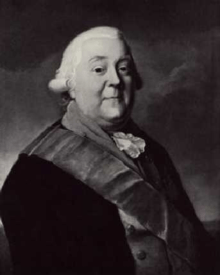
Duke Charles I provided Great Britain with 4,000 foot soldiers and 350 heavy dragoons (dismounted)[Note 2] under Lt-Colonel Friedrich Baum, all commanded by General Friedrich Adolf Riedesel.
General Riedesel reorganized the existing Braunschweig regiments into Corps to allow for the additional recruits required by the new treaty. Experienced soldiers were spread among the new companies in the Regiment von Riedesel, Regiment von Rhetz, Regiment Prinz Friedrich, and Regiment von Specht, as well as the Battalion von Barner and dragoons.[41] Braunschweig-Luneburg, along with Waldeck and Anhalt-Zerbst, was one of the three British auxiliary that avoided impressment,[41] and Karl I vowed not to send Landeskinder (sons of the land) to North America, so land owners were permitted to transfer to units that would remain in Braunschweig. Officers and non-commissioned officers went throughout the Holy Roman Empire recruiting to fill their ranks, offering financial incentives, travel to North America with the potential for economic opportunities in the New World, reduced sentences, and adventure.[42]
These soldiers were the majority of the German-speaking regulars under General John Burgoyne in the Saratoga campaign of 1777, and were generally referred to as "Brunswickers."[43] The combined forces from Brunswick and Hesse-Hanau accounted for nearly half of Burgoyne's army,[44] and the Brunswickers were known for being especially well-trained.[45] One of the ships used to cross Lake Champlain flew a flag of Braunschweig to recognize their significance to the army.[46] Riedesel's Brunswick troops made a notable entry into the Battle of Hubbardton, singing a Lutheran hymn while making a bayonet charge against the American right flank, which may have saved the collapsing British line.[47] Riedesel's wife, Friederike, traveled with her husband and kept a journal which remains an important primary account of the Saratoga campaign. After Burgoyne's surrender, 2,431 Brunswickers were detained as part of the Convention Army until the end of the war.[48]
Brunswick sent 5,723 troops to North America, of whom 3,015 did not return home in the autumn of 1783.[25][49] Some losses were to death or desertion, but many Brunswickers became familiar with America during their time with the Convention Army, and when the war ended, they were granted permission to stay by both Congress and their officers.[26] Many had taken the opportunity to desert as the Convention Army was twice marched through Pennsylvania German settlements in eastern Pennsylvania.[50] As the Duke of Brunswick received compensation from the British for every one of his soldiers killed in America, it was in his best interest to report the deserters as dead, whenever possible.[49] The Duke even offered six months' pay to soldiers who remained or returned to America.[51]
Ansbach-Bayreuth
The dual Margraviates of Brandenburg-Ansbach and Brandenburg-Bayreuth, under Margrave Charles Alexander, initially supplied 1,644 men to the British in two infantry battalions, one company of jägers and one of artillery, of whom 461 did not return home.[25] A total of 2,353 soldiers were sent from Ansbach-Bayreuth,[52] including an entire regiment of jägers.[53] They were described as "the tallest and best-looking regiments of all those here," and "better even than the Hessians."[54] These troops were incorporated into Howe's army in New York and were part of the Philadelphia campaign.[55] Ansbach-Bayreuth troops were also with General Cornwallis at the Siege of Yorktown,[56] with a force of nearly 1,100 troops.[57]
The Ansbach and Bayreuth regiments are remembered for a mutiny that occurred in Ochsenfurt. The soldiers were loaded onto boats on the Main River, but could not sail past the bridge at Ochsenfurt because the Prince-Bishop of Würzburg, Adam Friedrich von Seinsheim, refused to open it. The soldiers were also forced to stand through the night in the over-crowded boats.[58] On the morning of 8 March 1777 some Ansbach soldiers managed to get to the bank of the river and pulled the other boats to land. Wine merchants from Ochsenfurt soon arrived and sold drink to the soldiers.[58] The officers tried to address their concerns, but some men deserted. Chasseurs were posted to keep men from deserting, and fired warning shots; the mutineers returned fire. When the Margrave of Ansbach received word of the riot, he rode through the night to reach Ochsenfurt. The Margrave convinced his soldiers to reboard the boats and provided two additional boats to alleviate crowding.[59] The Margrave sailed with them as far as Mainz, where he succeeded in getting a bridge opened without the consent of Archbishop-Elector Friedrich Karl Joseph von Erthal.[60]
After the initial mobilization of troops, Ansbach-Beyreuth sent several other transports with new recruits. By the end of the war, 2,361 Soldiers had deployed to the Americas, but less than half, 1,041, returned had returned by the end of 1783.[54] The Margrave of Ansbach-Bayreuth was deeply in debt when the war broke out, and received more than £100,000 for the use of his soldiers.[52] In 1791 he sold Ansbach and Bayreuth to Prussia and lived the rest of his life in England on a Prussian pension.[61]
Waldeck
Waldeck had made a treaty to support Great Britain in London on 20 April 1776. Prince Friedrich Karl August of Waldeck kept three regiments ready for paid foreign service. The first of these regiments, with 684 officers and men, sailed from Portsmouth in July 1776 and participated in the New York campaign.[62] During the campaign the Waldeck regiment captured wine and spirits belonging to American General Lee and were embittered towards the British General Howe when he made them empty the bottles by the roadside.[63]
The Waldeck troops were integrated into the German auxiliaries under Hessian General Wilhelm von Knyphausen.
In 1778, the 3rd Waldeck Regiment was sent to defend Pensacola as part of the British force under General John Campbell.[64] The Regiment was dispersed throughout West Florida, including Fort Bute, Mobile and Baton Rouge. The regimental commander, Colonel Johann Ludwig Wilhelm von Hanxleden, complained that his soldiers were sickened and even died due to the climate. The remote locations received few supply ships, and the soldiers' pay was insufficient to buy local goods. Prince August informed Lord Germain that Waldeck could not recruit new soldiers fast enough to replace those dying in West Florida.[65] In addition to slow supplies, the British and Waldeck forces did not receive news in a timely manner. They were unaware that Spain had declared war on Great Britain until they were attacked by forces under Spanish Governor Bernardo de Gálvez. When this campaign was complete at the Siege of Pensacola, Spain recruited many of the poorly fed and supplied Waldeck soldiers.[66] British prisoners of war were later exchanged, but Waldeck prisoners of war were kept by the Spanish in New Orleans, Veracruz, and more than a year in Havana before finally being exchanged in 1782.[67]
Waldeck contributed 1,225 men to the war, and lost 720 as casualties or deserters.[25] In the course of the war, 358 Waldeck soldiers died from sickness, and 37 died from combat.[67]
Hanover
Five battalions of troops of the Electorate of Brunswick-Lüneburg (Hanover), whose Elector was none other than the British King George III, were sent to Gibraltar and Menorca to relieve the British soldiers stationed there, who could then be sent to fight in America.[28] Since Hanover was ruled in personal union and had its own government, Hanoverian troops were deployed under a British-Hanoverian Treaty in which Great Britain agreed to pay Hanoverian expenses and defend Hanover against invasion while the troops were away.[68] These Hanoverian soldiers were defenders during the Great Siege of Gibraltar, the largest and longest battle of the war, and in the defense of Menorca. Late in the war, two regiments from Hanover were sent to British India, where they served under British command in the Siege of Cuddalore against a combined French and Mysorean defense.
Anhalt-Zerbst
The Prince of Anhalt-Zerbst, Frederick Augustus signed a treaty to provide Great Britain with 1,160 men in 1777. The Regiment of two battalions was raised in five months, and consisted of 900 new recruits.[69] One battalion of 600–700 men arrived in the Canadas in May 1778 to guard Quebec City.[70] The other, consisting of some 500 "Pandours" (irregular soldiers recruited from Slavic lands within the Austrian Empire) was sent in 1780 to garrison British-occupied New York City. Whether these troops could function as irregular light infantry has been much debated, although they were described by contemporary accounts as Pandours.
Continental allies
German Americans
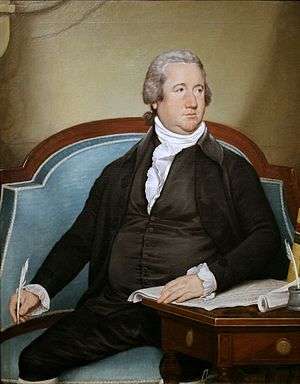
German immigration to the British colonies began soon after English colonists founded Jamestown. In 1690, German colonials built the first paper mill in North America, and the Bible was printed in America in German before it was printed in English. By the mid-18th century, approximately 10% of the colonial American population spoke German.[72] Germans were easily the largest non-British European minority in British North America, but their assimilation and Anglicisation varied greatly.[73]
During the French and Indian War, Great Britain utilized the large German population in North America by forming the Royal American Regiment, whose enlisted men were principally German colonists.[74] The regiment's first commander was General Henry Bouquet, a Swiss native. The regiment would later be commanded by General Howe. Other Germans came to North America during the French and Indian War, including Frederick, Baron de Weissenfels, who settled in New York State as a British officer. When the Revolutionary War began, Weissenfels deserted the British forces and served with the rebellion from 1775 until the end of the war, obtaining a Congressional commission as a lieutenant colonel.[75]
As with other ethnic groups in the British colonies, German-speaking colonists were divided, supporting both the Patriot and Loyalist causes. German loyalists fought in their local militias, and some returned to Germany in exile following the war.[76][Note 3] New York had a notably large German population during the war. Other colonies formed German regiments, or filled the ranks of local militias with German Americans. German colonists in Charleston, South Carolina, formed a fusilier company in 1775, and some Germans in Georgia enlisted under General Anthony Wayne.[77]
German colonists are most remembered in Pennsylvania, partly due to friendlier naturalization terms for immigrants,[78] and also because the German soldiers in Pennsylvania stand in contrast to the large, pacifist Quaker population in Pennsylvania.[74] Brothers Peter and Frederick Muhlenberg, for example, were first-generation Pennsylvanians who were educated at the German Francke Foundations.[79] Both were elected to Congress, and Peter served on Washington's general staff.[80]
Provost Corps
Pennsylvania Germans were recruited for the American Provost corps under Captain Bartholomew von Heer,[81][Note 4] a Prussian who had served in a similar unit in Europe[82] before immigrating to Reading, Pennsylvania prior to the war.[83] During the Revolutionary War the Marechaussee Corps were utilized in a variety of ways, including intelligence gathering, route security, enemy prisoner of war operations, and even combat during the Battle of Springfield.[84] The Marechausee also provided security for Washington's headquarters during the Battle of Yorktown, acted as his security detail, and was one of the last units deactivated after the Revolutionary War.[81] The Marechaussee Corps was often not well received by the Continental Army, due in part to their defined duties but also due to the fact that some members of the corps spoke little or no English.[82] Six of the provosts had even been Hessian prisoners of war prior to their recruitment.[82] Because the provost corps completed many of the same functions as the modern U.S. Military Police Corps, it is considered a predecessor of the current United States Military Police Regiment.[84]
German Regiment
On 25 May 1776,[85] the Second Continental Congress authorized the 8th Maryland Regiment (aka the German Battalion or German Regiment) to be formed of colonial ethnic Germans as part of the Continental Army. Unlike most continental line units, it drew from multiple states,[85] initially comprising eight companies: four from Maryland and four (later five) from Pennsylvania. Nicholas Haussegger, a major under General Anthony Wayne, was commissioned as the colonel. The regiment saw service at the Battle of Trenton and the Battle of Princeton, and took part in campaigns against American Indians. The regiment was disbanded 1 January 1781.[86]
Europeans
European Germans also came to the United States as allied soldiers. Some Germans came to the United States under the French flag. Johann de Kalb was a Bavarian who served in the armies of France before receiving a commission as a general in the Continental Army. France had eight German-speaking regiments with over 2,500 soldiers.[87] The famous Lauzun's Legion included both French and German soldiers, and was commanded in German.[88] There were also German soldiers and officers in the French Royal Deux-Ponts Regiment.[31]
_-_Google_Art_Project.jpg)
Other Germans came to the United States to utilize their military training. Frederick William, Baron de Woedtke, for example, was a Prussian officer who obtained a Congressional commission early in the war; he died in New York in 1776.[89] Gustave Rosenthal was an ethnic German from Estonia who became an officer in the Continental Army. He returned to Estonia after the war, but other German soldiers, such as David Ziegler, chose to stay and become citizens in the nation they had helped found.
Perhaps the most well-known German to support the Patriot cause was Friedrich Wilhelm von Steuben from Prussia, who came to America independently, through France, and served under George Washington as inspector general. General von Steuben is credited with training the Continental Army at Valley Forge, and he later wrote the first drill manual for the United States Army. In June 1780 he was given command of the advance guard in the defense of Morristown, New Jersey from General Knyphausen – a battle briefly led by two opposing German generals.[90]
Von Steuben's native Prussia joined the League of Armed Neutrality,[91] and Frederick II of Prussia was well appreciated in the United States for his support early in the war. He expressed interest in opening trade with the United States and bypassing English ports, and allowed an American agent to buy arms in Prussia.[92] Frederick predicted American success,[93] and promised to recognize the United States and American diplomats once France did the same.[94] Prussia also interfered in the recruiting efforts of Russia and neighboring German states when they raised armies to send to the Americas, and Frederick II forbade enlistment for the American war within Prussia.[95] All Prussian roads were denied to troops from Anhalt-Zerbst,[96] which delayed reinforcements that Howe had hoped to receive during the winter of 1777–1778.[97]
However, when the War of the Bavarian Succession erupted, Frederick II became much more cautious with Prussian/British relations. US ships were denied access to Prussian ports, and Frederick refused to officially recognize the United States until they had signed the Treaty of Paris. Even after the war, Frederick II predicted that the United States was too large to operate as a republic, and that it would soon rejoin the British Empire with representatives in Parliament.[98]
Notes and references
- Notes
- Jägers were offered a signing bonus of one Louis d'or coin, which was increased to four Louis d'or as Hesse tried to fill its companies with expert riflemen and woodsmen.
- The heavy dragoons from Brunswick did not have horses and performed as foot soldiers. They were expected to acquire horses during the campaign, which led to the Battle of Bennington.
- This refers to "Deutschland," literally "the land of the Germans," or the German states of the 18th century; there was no nation called "Germany" in the 1780s.
- "It is interesting to note that nearly all men recruited into the Provost Corps were Pennsylvania German." -David L. Valuska
References
- Atwood, Rodney (1980). The Hessians: Mercenaries from Hessen-Kassel in the American Revolution. Cambridge, England: Cambridge University Press.
- The Royal Household. "George III". Official website of the British Monarchy. Retrieved 3 March 2009.
- Reid (2010), p. 3.
- Bennett, J. Brett (29 Sep 2015). "Review. Hessians: Mercenaries, Rebels, and the War for British North America". Journal of the American Revolution. Retrieved 29 Aug 2019.
- Lowell (1884), p. 22.
- Eelking (1893), p. 263.
- "Deserter a Day 4 (of 5)". Journal of the American Revolution. 14 April 2016. Retrieved 29 Aug 2019.
- Krebs (2013), p. 43.
- Krebs (2013), p. 39.
- Krebs (2013), p. 31, 43.
- Krebs (2013), p. 42.
- Ferling (2007), p. 114.
- United States Declaration of Independence, Full transcript available from National Archives
- Krebs (2013), pp. 33-35.
- Krebs (2013), p. 35.
- Eelking, 259
- The Hessian Mercenary State: Ideas, Institutions, and Reform under Frederick II, 1760-1785, Ingrao, Charles W. (2003)
- "Hessians for Hire – Meet the 18th Century's Busiest 'Mercenaries'". Military History Now. 15 June 2013. Retrieved 22 Aug 2019.
- Krebs (2013), p. 23.
- Eelking (1893), p. 256.
- Eelking (1893), p. 23.
- Ferling (2007), p. 566.
- Ferling (2007), p. 538.
- Ferling (2007), p. 536.
- Eelking, 257
- Eelking, 258
- This article incorporates text from a publication now in the public domain: Wilson, J. G.; Fiske, J., eds. (1900). . Appletons' Cyclopædia of American Biography. New York: D. Appleton.
- Eelking, 16
- Eelking (1893), p. 100–101.
- Burgoyne (1997), p. v.
- Selig, Robert A. Ph.D. "The Revolution's Black Soldiers". Retrieved 10 July 2010.
- "After the First Battle of Trenton: Washington Crosses the Delaware, Again". Washington Crossing Historic Park. Archived from the original on 7 August 2011. Retrieved 27 April 2011.
- Collins, Bethany (19 August 2014). "8 Fast Facts about Hessians". Journal of the American Revolution. Retrieved 29 August 2019.
- Lowell (1884), p. 7.
- Manfred von Gall: Hanauer Journale und Briefe aus dem Amerikanischen Unabhängigkeitskrieg 1776-1783 der Offiziere Wilhelm Rudolph von Gall, Friedrich Wilhelm von Geismar, dessen Burschen (anonym), Jakob Heerwagen, Georg Paeusch sowie anderer Beteiligter Hanauer Geschichtsblätter, Band 41, Hanauer Geschichtsverein, Hanau 2005, ISBN 3-935395-04-3.
- Ketchum (1997), p. 93.
- Lowell (1884), p. 8.
- Ketchum (1997), p. 95.
- Eelking (1893), p. 17.
- Stephenson (2007), p. 49.
- Krebs (2013), p. 41.
- Krebs (2013), pp. 41-44.
- Ketchum (1997), p. 32.
- Ketchum (1997), p. 137.
- Ketchum (1997), p. 131.
- Gadue, Michael (2019). "The Braunschweig: A German-flagged Ship on Lake Shamplain, 1777". Journal of the American Revolution. Retrieved 16 July 2019. Cite journal requires
|journal=(help) - Stephenson (2007), p. 294.
- Smith (1973), p. 2.
- Smith (1973), p. 1.
- Smith (1973), p. 3.
- Eelking (1893), p. 267.
- Lowell (1884), p. 11.
- Burgoyne (1997), p. v, ix.
- Christhilf (2018), p. 3.
- Eelking (1893), p. 105.
- Eelking (1893), pp. 203, 209, 214.
- Lowell (1884), p. 277.
- Krebs (2013), p. 53.
- Krebs (2013), p. 54.
- Lowell (1884), p. 48–50.
- Lowell (1884), p. 12.
- Eelking (1893), p. 47.
- Eelking (1893), p. 50.
- Krebs (2013).
- Krebs (2013), p. 220.
- Krebs (2013), p. 222.
- Krebs (2013), p. 219.
- Rosengarten (1886), p. 62–63.
- Eelking (1893), p. 238.
- "Chapter 2: The Revolt of Pontiac and the American Invasion. The German Presence". Canadian Military Heritage. Retrieved 9 July 2010.
- Archiv der Franckeschen Stiftungen, AF St/S B I 94 I, 575-577
- Bobrick (1997), p. 41.
- Wolf (1993), p. 263.
- Rosengarten (1886), p. 11.
- "A brief memoir of the late Colonel Frederick Baron de Weissenfels". Library of Congress.
- Bobrick (1997), p. 482.
- Rosengarten (1906), p. 18.
- Rosengarten (1886), p. 10.
- Horn, Joshua (9 November 2015). "Peter Muhlenberg: The Pastor Turned Soldier". Journal of the American Revolution. Retrieved 29 November 2015.
- Wilson, Jonathan M (2019). God on Three Sides. German Pietists at War in Eighteenth-Century America. Pickwick Publications. p. 219. ISBN 1532663196.
- Valuska, David L., Ph.D. (2007). "Von Heer's Provost Corps Marechausee: The Army's Military Police. An All Pennsylvania German Unit". The Continental Line, Inc.
- Ruppert, Bob (1 October 2014). "Bartholomew von Heer and the Marechausse Corps". Journal of the American Revolution. Retrieved 29 Aug 2019.
- Ferling (2007), p. 340.
- "Order of the Marechaussee" (PDF). 26 (2). Fort Leonard Wood: Military Police Regimental Association. Spring 2015: 8. Retrieved 5 December 2015. Cite journal requires
|journal=(help) - Stephenson (2007), p. 30.
- Rosengarten (1886), p. 103.
- Rosengarten (1886), p. 110–111.
- Marston (2003), p. 20.
- Lossing (1860).
- Lockhart (2008), p. 225–227.
- Commager (1958), p. 994.
- Rosengarten (1906), p. 5.
- Rosengarten (1906), p. 13.
- Rosengarten (1906), p. 14.
- Rosengarten (1886), p. 22.
- Lowell (1884), p. 50.
- Rosengarten (1906), p. 17.
- Rosengarten (1906), p. 19.
Further reading
- Bobrick, Benson (1997). Angel in the Whirlwind. The Triumph of the American Revolution. New York: Simon & Schuster. ISBN 0-684-81060-3.
- Commager, Henry Steele; Richard B. Morris (1958). The Spirit of Seventy-Six. The story of the American Revolution as told by its participants. Castle Books; HarperCollins Publishers. ISBN 0-7858-1463-9. LCCN 67011325.
- Christhilf, Nicholas Dorsey (2018). An Early Philadelphia Musician (PDF). Annapolis.
- Doehla, Johann Conrad (1990). A Hessian Diary of the American Revolution. Translated, Edited, and with an Introduction by Bruce E. Burgoyne from the 1913 Bayreuth edition by W. Baron von Waldenfels. Norman and London: University of Oklahoma Press. ISBN 0-80612254-4. OCLC 722636758.
- Eelking, Max von (1893). The German Allied Troops in the North American War of Independence, 1776–1783. Translated from German by J. G. Rosengarten. Joel Munsell's Sons, Albany, NY. LCCN 72081186.
- Ferling, John (2007). Almost a Miracle. The American Victory in the War of Independence. Oxford University Press, New York. ISBN 978-0-19-518121-0.
- Hocker, Edward W. The Fighting Parson of the American Revolution: A Biography of General Peter Muhlenberg, Lutheran Clergyman, Military Chieftain, and Political Leader (1936).
- Huck, Stephan (2011). Soldaten gegen Nordamerika. München: Oldenbourg Verlag.
- Ketchum, Richard M. (1997). Saratoga: Turning Point of America's Revolutionary War. Henry Holt and Company, Inc., New York. ISBN 0-8050-4681-X.
- Jarck, Horst-Rüdiger (ed.)(2000). Brücken in eine neue Welt. Wiesbaden: Harrassowitz.
- Krebs, Daniel (2013). A Generous and Merciful Enemy. Life for German Prisoners of War during the American Revolution. Norman: University of Oklahoma Press. ISBN 978-0-8061-4356-9.
- Lockhart, Paul (2008). The Drillmaster of Valley Forge. The Baron De Steuben and the Making of the American Army. New York: HarperCollins Publishers. ISBN 978-0-06-145163-8.
- Lossing, Benson J (1860). The Pictoral Field-Book of the Revolution. II. New York: Harper & Brothers.
- Lowell, Edward J (1884). The Hessians and the other German Auxiliaries of Great Britain in the Revolutionary War. Harper & Brothers, Franklin Square, New York. LCCN 02004604.
- Marston, Daniel (2003). The American Revolution, 1774-1783. Taylor & Francis. ISBN 978-0-415-96837-9.
- Neimeyer, Charles Patrick. America Goes to War: A Social History of the Continental Army (1995) complete text online
- Reid, Stuart (2010). Frederick the Great's Allies 1756-63. Osprey Publishing Ltd. ISBN 978-1-84908-177-1.
- Rosengarten, Joseph George (1886). The German Soldier in the Wars of the United States. J.B. Lippencott Company, Philadelphia. ISBN 1-4286-5432-1.
- Rosengarten, Joseph George (1906). Frederick the Great and the United States. Harvard University.
- Scales, Jodie K. (2001). Of Kindred Germanic Origins. Writers Club Press.
- Smith, Clifford Neal (1973). Brunswick Deserter-Immigrants of the American Revolution. Heritage House, Thomson, Illinois.
- Stephenson, Michael (2007). Patriot Battles: How the War of Independence was Fought. New York: Harper Collins. ISBN 978-0-06-073261-5.
- Tappert, Theodore G. "Henry Melchior Muhlenberg and the American Revolution." Church History 11.4 (1942): 284-301. online
- Tolzmann, Don Heinrich, ed.; German Americans in the Revolution: Henry Melchoir Muhlenberg Richards' History (2013, based on 1908 history), emphasis on Pennsylvania
- Stone, William L.; Hund, August (1891). Letters of Brunswick and Hessian Officers during the American Revolution. Albany: Joel Munsell's Sons. ISBN 0-945726-84-8. LCCN 02003420.
- Von Feilitzsch, Heinrich Carl Philipp; Bartholomai, Christian Friedrich (1997). Diaries of Two Ansbach Jaegers. Translated by Burgoyne, Bruce E. Bowie, Maryland: Heritage Books. ISBN 0-7884-0655-8.
- Wolf, Stephanie Grauman (1993). As Various As Their Land: The Everyday Lives of Eighteenth-Century Americans. New York: Harper Collins. ISBN 0-06-016799-8.
External links
- The Ansbach-Bayreuth Army in America
- Bibliography of the German Participation in the American Revolution compiled by the United States Army Center of Military History
- German Auxiliaries Muster Rolls, 1776-1786 Seventy muster rolls and 15 additional letters and documents of the German regiments employed by the British to fight in the American Revolutionary War digitized by the William L. Clements Library
- German Auxiliary Units at Yorktown at the U.S. National Park Service
- Haldimand Collection – Numerous documents and letters concerning the participation of Hessians soldiers to the American Revolutionary War
- The Marechausee: von Heer’s Provost Corps, corps history
- Recreated Regiment Von Riedesel with Regiment history